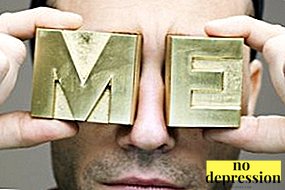The phenomenon of personality is too complex to give it an unambiguous definition. You can consider it as a social subject or a chain of psychological connections. The value of understanding what a person is is that it helps to better understand oneself, to study one’s abilities, motivation, temperament. It allows you to learn how to apply this knowledge in practice, building relationships with other people.
What is personality?
Personality is a collection of individual social and psychological properties of character and behavior. There are certain properties, structure and personality types. They differ, since each classification method is based on research and points of view of different scientists in the field of psychology and sociology. Unite them except some properties that help to "draw" a social and psychological portrait of the individual.
- Character. An important component that demonstrates the attitude to the world, people around, life, defining behavior and shaping views.
- Temperament. In accordance with this characteristic, there is a division into personality types: melancholic, choleric, phlegmatic, sanguine. Each of them has its own reactions to life circumstances, their perception.
- Motivation. A person may have several motives that determine his actions and outgoing from his needs. They are the driving force; the stronger the motivation, the more purposeful the person.
- Abilities There are volitional, mental, physical, mental, etc. They are the basis for accomplishments and goals. But not always man skillfully disposes of them.
- Emotionality It shows how a person expresses his attitude to the situation, people, events.
- Directivity The ability to define values and goals, to move towards their achievement. It is a collection of things, tangible and intangible, that are really dear to man.
- Worldview. A look at life, a vision of the world, an attitude towards them. It can be realistic, mystical, feminine, masculine, positive, negative.
- Experience. Knowledge and skills comprehended throughout life, formed the world outlook, habits.
- Body picture External expression of personality characteristics: gait, facial expressions, gestures, stoop, or an attempt to keep your back straight, etc.
Social structure of personality
Sociology defines the personality structure as an aggregate of objective and subjective properties that form its detail, depending on society.
There are 2 approaches, each of which highlights its important components:
- Activity, culture, memory. Activity involves conscious actions in relation to an object or a subject. Culture affects social norms that perpetrate the actions of an individual. Memory is a treasure trove of knowledge formed in experience.
- Value orientations, social roles, culture. This trio reflects the properties of character acquired through interaction with the subjects of society, vaccinated by parents, inherited "by inheritance", formed by life experience.
Personality structure in psychology
The psychological structure of the personality mainly consists of the following components:
- Directivity Needs, installations, interests. It happens that a person has only one of the leading components, and the rest is less developed. For example, a person has a need for work, but this does not mean that he will be interested in her. To work direction, in this case it may be enough and financial motive.
- Abilities This component affects the previous one. For example, an individual has the ability to draw, it generates interest, which is the leading component of directionality and motivation for development in this particular area.
- Character. The most important component, sometimes a person is judged by it, and not by direction or ability. For example, a person with a bad and complex character will find it difficult to integrate into society, even if he possesses phenomenal abilities in any field.
- Self control Defines the ability to plan behavior, transform, correct actions.
The structure of personality according to Freud
In the structure of personality proposed by Freud, the following components:
- It. Unconscious part that generates desires, internal instincts, libido. Component, based on the biological desire, driven by the desire for pleasure. If there is tension, it can be defused by fantasies, reflex actions. Unfulfilled desires often result in a problem in social life.
- Ego. The consciousness that controls It. The ego is responsible for satisfying the desires of Ono. But this happens after the circumstances are analyzed, the realization of the desired should not contradict social norms.
- Superego. The set of moral and ethical principles and taboos that affect human behavior. They originate in childhood (3–5 years), at a time when parents pay the most attention to raising children. These rules are fixed in a child focus, later complemented by their own norms, which they acquire in life experience.
Three components should develop in the same way; if one of them is more active, the balance is disturbed. The balanced work of the three components allows you to develop a protective mechanism:
- Negation. Causes the suppression of pulses emanating from within.
- Projection. When a person attributes his negative traits to other people.
- Substitution When an unreachable object is replaced by one that is available.
- Rationalization. A person is able to logically explain his actions.
- The formation of the reaction. Doing the opposite of internal impulses, which a person considers forbidden.
Freud also singled out the Electra and Oedipus complexes. Children unconsciously consider one of the parents as a sexual partner, feeling jealous of the second. Girls see the threat in the mother, the boys in the father.
Personality structure according to Rubinstein
Rubinstein called 3 components of the structure:
- Directivity It includes beliefs, motivation, needs, worldview, behavioral factors. It expresses the social essence, determines the type of activity.
- Skills, knowledge. Funds received through knowledge and subject activity. Knowledge helps to navigate the world, skills allow you to engage in specific activities, skills contribute to the achievement of results.
- Typological properties. This includes temperament, character, abilities that make a person unique.
In addition, Rubinstein distinguished levels of organization:
- Vital. Includes experience, morality, worldview.
- Personal. Individual features of character.
- Mental. Psychological processes, specificity, activity.
Rubinstein believed that the formation of personality is due to the interaction with society and the world as a whole. The structure of the orientation of the individual consists of conscious actions and the subconscious.
Jung personality structure
Jung identified the following components:
- consciousness;
- collective unconscious;
- individual unconscious.
Consciousness is divided into the human I (person), shown to others and the Ego, the real essence of man. Person helps to socialize. This is the mask that a person wears to get in touch with other individuals. This allows you to make an impression, attract attention. Makes buying fashionable things, expensive cars, big houses to fit and fit into a certain layer of society.
The ego is a core formed from experiences, thoughts, awareness of its actions and decisions. This experience, knowledge, skills. Thanks to the ego, man is a whole person.
The individual unconscious is formed from thoughts, beliefs, experiences, desires. Previously, they were relevant for a person, but after he survived them, they turned into memories. They are stored in the unconscious, sometimes go outside. Divided into archetypes:
- Shadow. A kind of dark twin. These are vicious desires, negative feelings, immoral thoughts, which the person suppresses, as he is afraid to face them in the open. Jung considered that it was harmful to force out the dark side, it should be accepted and against its background one should consider one's good features.
- Anima and animus. Male and female. Animus gives women men's traits - willpower; anima allows men to sometimes be weak - to show softness. Jung explained this by the presence of male and female hormones in opposite sexes. The presence of the concepts of anima and animus enables women and men to better understand each other.
- The self. Jung called it the core of integrity. Self develops only with a balanced development of all components of the structure.
Personality structure according to Leontiev
A. N. Leontiev defines personality as an experience, a set of actions, decisions. He divided the personality structure into levels:
- Psychophysical background. This includes temperament, the makings that can grow into abilities.
- Expressive and instrumental. Roles, character, ability. This is the outer shell of a person through which he interacts with the world.
- Inner world. Values, meanings, relationships. This is a person's view of the world through the prism of his own opinion about him.
- Existential level. Includes freedom, spirituality, responsibility.
Leontiev singled out in his theory the concept of "rebirth of personality". It occurs when a person corrects his behavior, finding new methods for solving conflict and difficult situations.
Personality structure according to Platonov
KK Platonov built a pyramidal personality structure with four substructures (from the foundation to the top):
- Biological conditionality. Genetics and physiology. This includes age, gender.
- Forms of display. Thinking, attention, memory, perception, sensations. The more developed they are, the wider the possibilities.
- Social experience. Skills, skills, knowledge gained through experience.
- Directivity Worldview, aspirations, beliefs, ideals.
Socionic personality types in psychology
Socionics is a concept developed by Aushra Augustinavichiute, based on personality types proposed by Jung. In different sources there are different symbols, conditionally they can be divided into such groups.
Analysts:
- INTJ is a strategist. He has a rich imagination, he always has a plan for the coming Saturday and for 20 years ahead.
- INTP is a scientist. Creativity and ingenuity are their strong point. They believe in science, believe that it is able to explain everything.
- ENTJ - the commander. Resourcefulness, courage, strength of mind - the strong traits of such people. They always find a solution to the problem.
- ENTP is a polemicist. Thinkers with curiosity, sharp minds. We are happy to argue.
Diplomats:
- INFJ - activist. Idealistic, sometimes vengeful, usually little talkative, but inspiring.
- INFP - mediator. Altruistic, able to come to the aid at any moment.
- ENFJ - coach. They have unusual charisma, inborn leadership qualities, they can inspire and enchant.
- ENFP - wrestler. More sociable, creative, creative, optimists, full of enthusiasm.
Keepers:
- ISTJ - admin. Perceive only facts, reliable.
- ISFJ - the defender. Have a high responsibility, will assist relatives.
- ESTJ - the manager. Such people can easily manage the masses, they are skilled administrators.
- ENFJ - Consul. Sociable, popular, love to take care of others.
Seekers:
- ISTP - virtuoso. They have the courage, the desire for experimentation, the master of all trades.
- ISFP - artist. Possess subtle charm, ready to rush to the search and study of the unknown.
- ESTP - business man. Susceptible, the energy in them is in full swing, they like to take risks, they are smart.
- ESFP - entertainer. You will not get bored with such a person, they are always cheerful, they adore spontaneous actions and surprises.
To quickly understand a person, it is enough to disassemble his personality on the shelves. This helps the theory of its structure and types. This information helps build business and personal connections.



